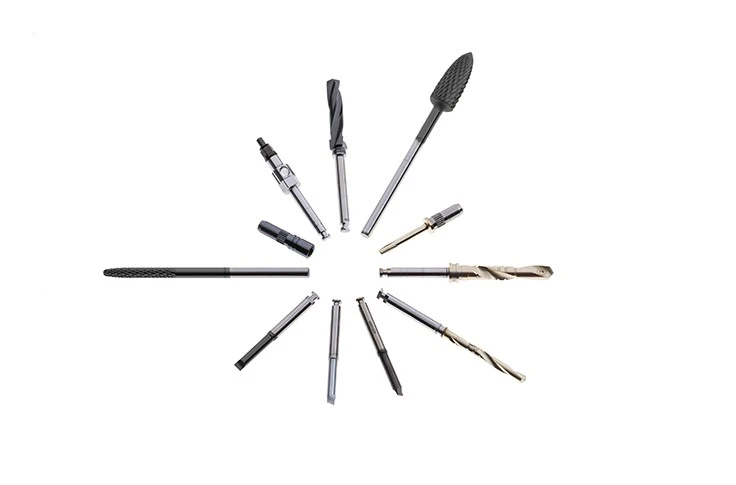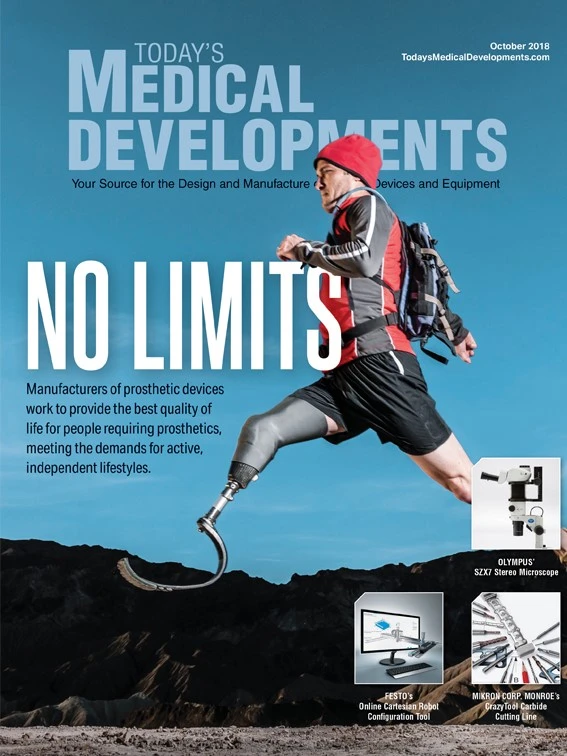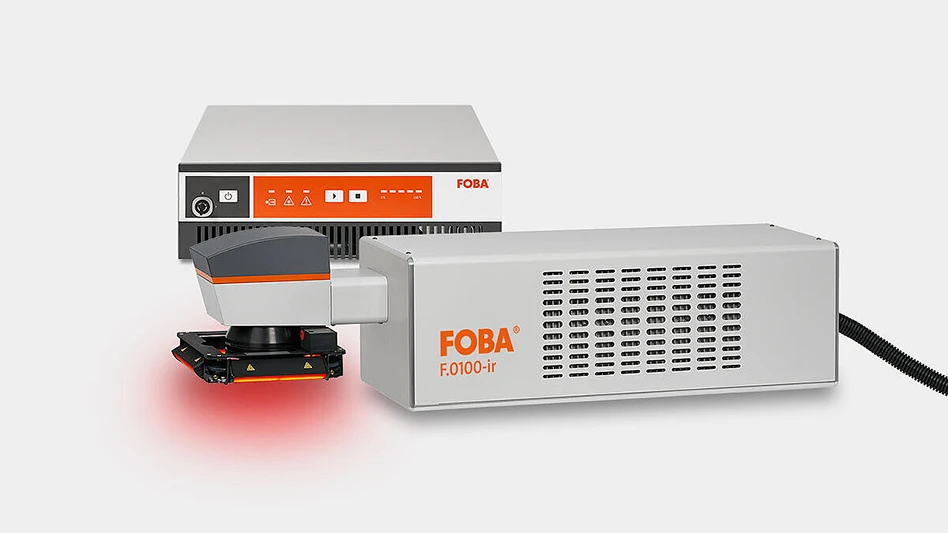

Medical device manufacturers must contend with a variety of challenges to differentiate products in a highly competitive market, placing a greater emphasis on functional coatings applied to medical devices from implants to scalpels, needle drivers, bone saws, and reamers.
When manufacturers began coating instruments, the primary purpose was improving aesthetics for identification during surgery. Titanium nitride, with its easily recognizable gold color, became the coating of choice.
Original equipment manufacturers (OEMs) are moving beyond aesthetics by applying titanium nitride and other physical vapor deposition (PVD) coatings to improve wear resistance, reduce galling between sliding component, increase lubricity, and help retain sharp edges on cutting instruments.
Advanced coatings also deliver important functional benefits, such as anti-glare surface for bright operating rooms, antimicrobial properties, and anti-fouling in the presences of blood and tissue. In some cases, it could turn devices into multiple re-use items, for example with laparoscopic instruments.
Medical coatings
One popular option for adding functional value to medical devices is medical-grade polytetrafluoroethylene (PTFE). Known for its low coefficient of friction, PTFE is not recommended for high-load applications because it is relatively soft and can wear quickly or micro-fracture.
An alternative is anodization, an electrolytic process that coats the metal substrate. It is impossible to effectively anodize stainless steel without losing wear resistance and durability, a significant disadvantage. Anodization can also form a layer of rust on the stainless steel, causing it to corrode. So, the process is typically only used on aluminum or titanium, limiting the range of medical devices that can benefit.
Physical vapor deposition
Physical vapor deposition (PVD), a process that describes various vacuum-deposition methods, can produce extremely hard, thin coatings on stainless steel, titanium, ceramics, and other advanced materials.
These coatings combine extreme surface hardness, a coefficient of friction, and anti-corrosion properties. Typically 1µm to 4µm, with close tolerancing, the component retains its form, fit, and dimensions after coating, without re-machining.
Introduced into the medical device industry nearly 20 years ago, PVD coatings such as titanium nitride (TiN) are 2,200 Vickers-to-2,400 Vickers and provide excellent wear resistance. Despite those functional properties, early medical uses were for decorative, high-end finishes.
“Initially, the industry was looking for ways to differentiate instruments aesthetically and for identification purposes, and titanium nitride was a solution for that. To this day, it is the highest volume PVD coating used in the medical device industry,” explains Matt Thompson, business development manager in North America with Oerlikon Balzers.
Thompson adds that the orthopedic industry was the first medical segment to realize the functional strengths of PVD coatings applied to reamers, drills, taps, and broaches.
Titanium nitride, well established in the medical device industry, supported by a vast quantity of literature and testing for bio-compatibility and has many precedents with the U.S. Food and Drug Administration (FDA).
Other PVD coatings such as diamond-like-carbon (DLC) and aluminum titanium nitride (AlTiN) have also gained widespread acceptance – particularly for coating stainless steel because few surface treatments can be applied to stainless steel and provide functional properties.
“DLC coatings provide an ideal combination of low coefficient of friction like PTFE, but with the hardness of a ceramic,” Thompson explains. “The coating has good functional properties, including excellent wear resistance, lubricity, corrosion resistance, anti-sticking, and anti-fouling.”
DLC coatings improve sharp edge retention of surgical instruments, extending service life. Also, cleaner surgical incisions help surgical incisions heal more quickly, reducing patient recovery time.
In addition to low coefficient of friction and wear resistance, PVD coatings can eliminate lubrication needs. This is particularly useful for the pneumatic components of powered instruments such as surgical bone saws or machines for implanting and removing intramedullary nails. Surgeons who perform under the harsh glare of operating room lighting also benefit from its anti-glare properties.


Antimicrobial
Invasive surgical instruments circumvent the body’s natural lines of defense, so it is critical that instruments’ surfaces are antimicrobial whenever possible to reduce the chance of infection. Oerlikon Balzers’ titanium nitride (TiN-Ag) PVD coatings, with 2% to 5% silver, address this issue.
“Silver-doped titanium nitride is especially useful in trauma applications in which you’ve got a lot of open wounds,” Thompson explains. “These may require medium- to short-term implantation of devices and, subsequently, are prone to a higher percentage of surgical site infections.”
TiN-Ag testing demonstrates high- antimicrobial efficiency and shows no cytotoxic effect.
Regardless of a coating’s antimicrobial and biocompatibility properties, it is worthless if it delaminates from the surface after going through the thermal cycling of an autoclave. So, engineers designed TiN-Ag coatings to withstand multiple autoclave cycles without influencing the antimicrobial activity.
“An antimicrobial PVD coating has the potential to take a product to an entirely different level compared to the competition,” Thompson says.
Customized Solutions
To further differentiate products, medical device manufacturers often require even more customized surface coatings. For this, Oerlikon Balzers and others have the research and development capabilities to tailor coating solutions to meet unique requirements. In addition to coating thickness and hardness, properties such as structure, chemical and temperature resistance, and adhesion can be precisely controlled.
In a perfect world, OEMs would investigate PVD coatings early in the design phase of new products. However, Thompson says in the real world, many seek out coating solutions only after experiencing excessive wear, high friction, and other issues.
“OEMs often come to us with a problem late in the design phase and they are looking for a coating solution when certain properties such as the substrate material may already be locked in,” Thompson says. “Our goal is for customers to start thinking about PVD and PACVD coatings as a design element to fully unlock the potential of this technology and add value to precision components.”
Oerlikon Balzers
http://www.oerlikon.com

Explore the October 2018 Issue
Check out more from this issue and find your next story to read.
Latest from Today's Medical Developments
- Why manufacturing, intralogistics companies need to embrace the cloud
- February 2025 US cutting tool orders total $198.6 million
- The Smoothest Surfaces For Your Toughest Materials
- Extraordinary Starts Where Limits End | Okuma
- DISCOVER MORE WITH Mazak Northeast event
- Walter’s WT26 partial- and full-profile thread turning inserts
- Metalworking machinery orders increase for February 2025
- JW Winco’s practical sensor holders





